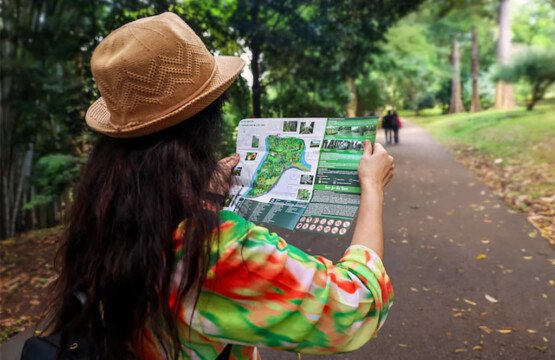Bali offers a rich tapestry of experiences—from lush rice terraces and sacred temples to pristine beaches and vibrant markets. To truly immerse yourself in Bali’s beauty, exploring its diverse landscapes by road is essential. However, navigating Bali’s roads requires more than just a map; it demands awareness, patience, and respect for local customs. This guide provides seven essential tips to ensure a safe and enjoyable journey through Bali’s unique roadways.
1. Understand Bali’s Driving Culture
Driving in Bali can be a stark contrast to what many travelers are accustomed to. The island’s roads are shared by a mix of vehicles, including cars, motorbikes, bicycles, pedestrians, and even livestock. Understanding the local driving culture is crucial:
- Left-Hand Traffic: Bali follows left-hand traffic rules. If you’re from a country that drives on the right, take extra caution, especially when making turns or navigating roundabouts.
- Use of Horns: In Bali, honking is often a friendly gesture to alert others of your presence, not necessarily an expression of anger. Use your horn to signal intentions, especially when overtaking or approaching blind corners.
- Road Etiquette: Yielding to traffic from the right is customary. Be prepared for motorbikes to weave between lanes and always check your mirrors and blind spots before changing directions.
2. Equip Yourself with the Right Documents
To legally drive in Bali, it’s essential to have the appropriate documentation:
- International Driving Permit (IDP): An IDP, along with your home country’s driving license, is required for renting and operating vehicles in Bali. Police may conduct random checks, so always carry both documents.
- Insurance: Ensure your rental vehicle is covered by insurance. Accidents can happen, and having insurance provides peace of mind and financial protection.
3. Prioritize Safety Gear
Safety should always be a top priority:
- Helmets: If you’re riding a motorbike or scooter, wearing a helmet is mandatory by law and crucial for your safety. Accidents involving scooters are common, and a helmet significantly reduces the risk of serious injury.
- Appropriate Footwear: Avoid driving barefoot or wearing flip-flops. Opt for closed-toe shoes that provide better control and protection.
- Protective Clothing: Consider wearing long sleeves and pants to shield yourself from the sun and potential road debris.
4. Navigate Bali’s Road Conditions
Bali’s road conditions can vary significantly:
- Road Quality: While major roads are paved, many rural routes may be narrow, uneven, or poorly lit. Always drive cautiously and be prepared for sudden changes in road conditions.
- Obstacles: Be vigilant for unexpected obstacles such as potholes, loose gravel, stray animals, and pedestrians. In rural areas, livestock like chickens and cows often wander onto roads.
- Weather Considerations: Rain can make roads slippery. Drive slowly, maintain a safe distance, and avoid sudden maneuvers during wet conditions.
5. Plan Your Routes Wisely
Effective route planning can save time and reduce stress:
- Avoid Peak Hours: Traffic congestion is common during peak hours (6-8 am and 5-7 pm). Plan your travels during off-peak times to avoid delays.
- Use Navigation Apps: Utilize apps like Google Maps or Waze for real-time traffic updates and alternative routes. These tools can help you avoid congested areas and find the quickest paths.
- Know Detours: Familiarize yourself with alternative routes, especially if you’re heading to popular tourist destinations. This knowledge can help you bypass traffic jams and enjoy scenic drives.
6. Respect Local Customs and Laws
Respecting local customs and laws ensures a harmonious experience:
- Dress Modestly: When visiting temples or sacred sites, dress modestly by covering shoulders and knees. Women should refrain from entering temples during menstruation.
- Avoid Inappropriate Behavior: Public displays of affection, using plastic bags, and engaging in illegal activities can offend local sensibilities and may result in fines.
- Adhere to Traffic Laws: Always follow traffic rules, including speed limits and road signs. Disregarding traffic laws can lead to fines and accidents.
7. Stay Calm and Patient
Bali’s traffic can be chaotic, but maintaining a calm demeanor is essential:
- Adopt a Zen Attitude: Given Bali’s free-flowing traffic, adopting a calm and patient mindset is essential to enjoy the journey. Expect the unexpected and go with the flow.
- Avoid Aggressive Driving: Refrain from aggressive driving behaviors such as tailgating or weaving through traffic. These actions can lead to accidents and escalate tensions.
- Be Courteous: A friendly wave or nod can go a long way in fostering positive interactions with other road users.
Conclusion
Exploring Bali by road offers an unparalleled opportunity to experience the island’s diverse landscapes and rich culture. By understanding local driving customs, equipping yourself with the necessary documents, prioritizing safety, and respecting local laws, you can navigate Bali’s roads with confidence and ease. Remember, the journey is just as important as the destination. Drive safely and enjoy all that Bali has to offer.










Join The Discussion